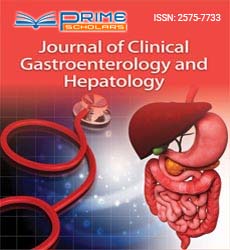Commentary - (2023) Volume 7, Issue 1
The Purpose of Vermiform Appendix and its Impact on the Human Body after its Removal
David Holgersen*
Department of Surgery, Antony Private Hospital, France
*Correspondence:
David Holgersen,
Department of Surgery, Antony Private Hospital,
France,
Email:
Received: 30-Jan-2023, Manuscript No. IPJCGH-23-16032;
Editor assigned: 01-Feb-2023, Pre QC No. IPJCGH-23-16032 (PQ);
Reviewed: 15-Feb-2023, QC No. IPJCGH-23-16032;
Revised: 20-Feb-2023, Manuscript No. IPJCGH-23-16032 (R);
Published:
27-Feb-2023, DOI: 10.36648/2575-7733.7.1.7
Description
The cecum, a pouch-like aperture in the large intestine into
which the contents of the small intestine are evacuated, is a
connection between the appendix, also known as the vermiform
appendix, and the cecum. It’s uncertain whether the appendix
has any purpose in humans. It is believed to play a role
in immune function during the first three decades of life by exposing
leukocytes to antigens in the gastrointestinal tract and
encouraging the p53 pathway, housing and cultivating beneficial
gut flora that can repopulate the digestive system after an
illness that wipes out normal populations of these flora, providing
a location in the foetus where endocrine cells can grow and
produce molecules that regulate homeostasis, and providing a
location in the appendix is typically between 8 cm and 10 cm
length and less than 1.3 cm broad.
The appendix cavity is considerably narrower where it joins the
cecum than its closed end. The mucous secretions of the appendiceal
walls or any intestinal contents that have permeated
the structure can normally be expelled into the cecum by the
appendix’s muscular walls. If the appendix cannot open or evacuate
its contents into the cecum, appendicitis may result. The
most frequent impediment in the aperture is a fecalith, a particle
of solidified faeces. When the appendix is prevented from
emptying by itself, a number of things happen.
Edema, swelling, and organ distention are brought on by the appendix’s
accumulation of fluids and its own mucous secretions.
As the distention increases, the blood arteries in the appendix
close off, causing the appendiceal tissue to experience necrosis,
or death. Meanwhile, as the bacteria that are typically present
in this region of the gut begin to proliferate in the sealed
pocket, the inflammation worsens. The appendix may rupture
due to the distention and weakening brought on by necrosis, discharging its contents into the abdominal cavity and infecting
the membranes that line and cover the abdominal organs.
Thankfully, the body’s natural defences frequently thwart peritonitis.
The appendix is isolated from the peritoneal cavity that
surrounds it by an exudate that normally forms in the sites of
inflammation.
In individuals with a healthy appendix, the pain of appendicitis
is typically felt between the navel and the front edge of the right
hipbone. However, because many people take supplements
while lying down, they may experience the aggravation of an infected
appendix attack in a different or deceptive area, making
it difficult to distinguish their adverse effects from the stomach
pain caused by other illnesses. Ultrasound or computed tomography
(CT) screening may also be useful in the diagnosis of appendicitis.
The swollen appendix frequently wraps itself around the omentum,
a sheet of fatty tissue. The primary therapy for appendicitis
involves the surgical removal of the appendix during a
quick procedure called an appendectomy. General anaesthesia
is used for the treatment, which lasts less than 30 minutes and
causes little discomfort. If a diagnosis of the condition cannot
be made with reasonable certainty right away, it is customary to
wait 10 hours to 24 hours before making a final determination
that the patient has acute appendicitis. Due to the minor possibility
that the appendix would rupture and result in peritonitis,
the patient is now kept under constant medical supervision.
Acknowledgement
None.
Conflict Of Interest
The authors declare no conflict of interest.
Citation: Holgersen D (2023) The Purpose of Vermiform Appendix and its Impact on the Human Body after its Removal. J Clin Gastroenterol Hepatol. 7:07.
Copyright: © 2023 Holgersen D. This is an open-access article distributed under the terms of the Creative Commons Attribution License, which permits unrestricted use, distribution, and reproduction in any medium, provided the original author and source are credited.

